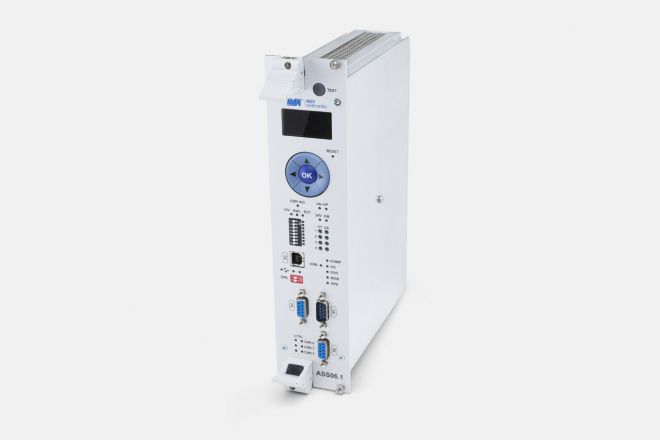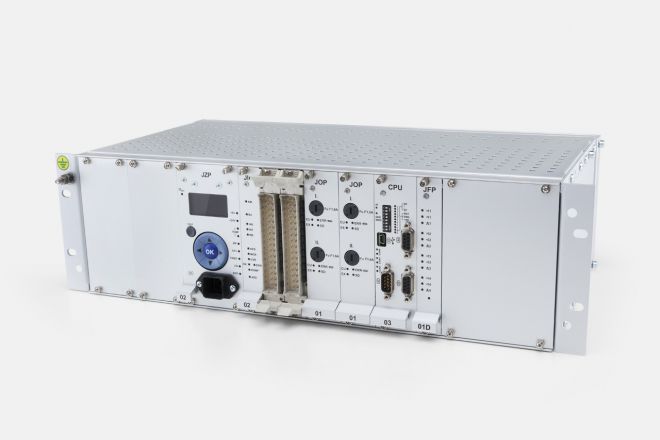In collaboration with DAKO-CZ, a.s., MSV elektronika develops and produces electronic modules for DAKO braking systems.
The produced control units are a part of DAKO anti-skid devices, which are certified as an interoperability element in accordance with EU Directive 2008/57/EC as amended by Directives 2009/161/EC and 2001/18/EU. The units are supplied for various types of traction and non-traction vehicles since 2006. The units can be used on vehicles equipped with disc or shoe brakes and on vehicles with two or four axles.
The control unit determines the real speed of the vehicle based on axle rotation speed and compares the speed of individual axles and its fluctuations to evaluate the occurrence of skid. If skid is detected, the control unit temporarily reduces axle braking force. The system is design to optimise the braking process, minimise braking distance at minimum air consumption and minimise mechanical wear on the wheel sets. The control unit makes regulatory adjustments every 10 ms and updates real speed values and acceleration values every 500 µs. The unit can be powered by 24 V, 36 V, 48 V or 110 V. The units are housed in 6U tall cabinets or standard 19” 3U tall cabinets.


The magnetic brake control unit was developed for the DAKO rail brake and is supplied by our company since 2012, either separately or as a part of the magnetic brake control cabinet along with power and control devices, including a system for measuring braking currents and diagnostics of the flyback diodes of the brake beams. The control unit ensures correct functioning under all possible operating conditions in accordance with relevant regulations. Similarly to the control unit of the electronic anti-skid system, the main benefit of using the control unit is a greatly reduced braking distance during emergency braking, secondary braking at steep inclines and also improved adhesion conditions when braking in very poor weather conditions. The unit improves the adhesion of the braking wheel set located directly behind it.
Connection to the vehicle's control computer is done via CAN communication with CANopen protocol. In addition, a special secondary CAN communication line also allows for the connecting of a diagnostic display, which can be housed in the main rack cabinet and thus be easily accessible to the staff.
